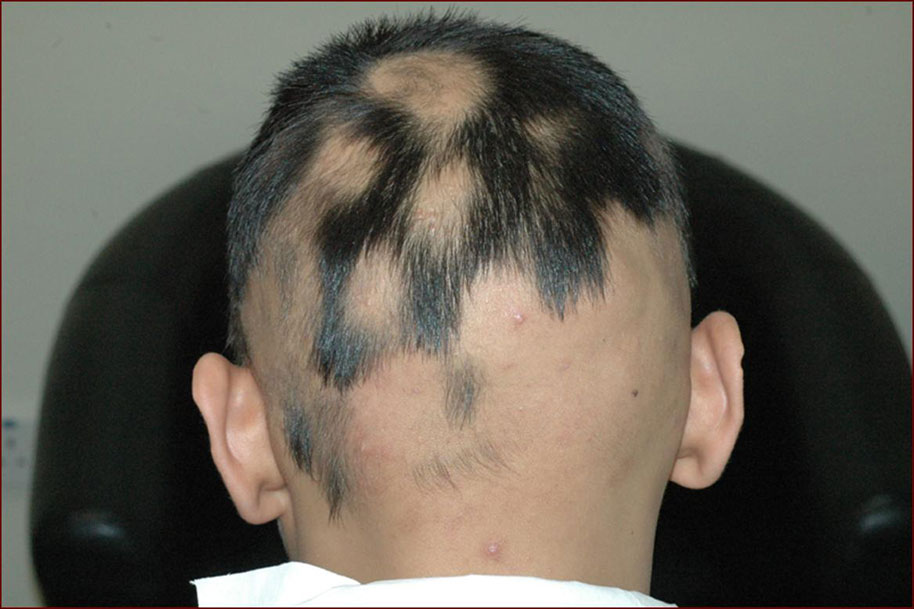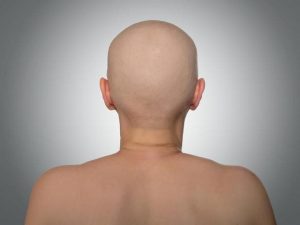
Regrowth usually starts at the centre of the bald patch with fine white hair that thickens with time and usually regains its colour. Short, tapered hairs, known as exclamation mark hairs that are characteristic of alopecia areata, may be seen at the edge of the bald patch. Sometimes the hair loss is diffused rather than well-circumscribed patches. It tends to affect the pigmented hair so there may be some white hairs left within the bald area in older people. Typically, it starts as one or more bald, smooth patches on the scalp, which are not inflamed or scaly. If alopecia areata affects the eyelashes, then the eyes may become sore due to dust, particularly in dry and windy conditions. It can be a very upsetting condition, especially if the bald area cannot be disguised by hairstyle. There may be a tingling sensation in the scalp. About 20% of people with alopecia areata have a family history. There is a genetic predisposition to alopecia areata. Stress occasionally appears to be a trigger for alopecia areata, but it is possible that this link may be coincidental as many of those affected have no significant stress. Your doctor may suggest a blood test.Īlopecia areata is not catching and no connection has been made with food or vitamin deficiencies. If you have other symptoms then discuss these with your doctor. Someone with alopecia areata is slightly more likely than a person without it to develop other autoimmune conditions such as thyroid disease, diabetes, lupus and vitiligo (white patches on the skin), although the risk of getting these disorders is still very low. Why this might happen is not fully understood, nor is it known why only localised areas are affected and why the hair usually regrows again. The cause of this inflammation is unknown but it is thought that the immune system, the natural defence which normally protects the body from infections and other diseases, may attack the growing hair. Hair is lost because it is affected by inflammation.

In alopecia totalis and alopecia universalis, the likelihood of total regrowth is less. Most people get further attacks of alopecia areata. The hair sometimes regrows white, at least in the first instance.
#Alopecia universalis causes full#
If more than half the hair is lost then the chances of a full recovery are not good. Most people, with only a few small patches get full regrowth within a year. The chances of the hair regrowing are better if less hair is lost at the beginning. Regrowth of hair in typical alopecia areata is usual over a period of months or sometimes years, but cannot be guaranteed. It is not possible to predict how much hair will be lost. In some people larger areas are affected and occasionally it can involve the whole scalp (alopecia totalis) or even the entire body and scalp (alopecia universalis).


It usually causes small, coin-sized, round patches of baldness on the scalp, although hair elsewhere such as the beard, eyebrows, eyelashes, body and limbs can be affected. Alopecia areata is a common cause of non-scarring (does not cause scarring to the scalp) hair loss that can occur at any age. It will tell you what alopecia areata is, what causes it, what can be done about it, and where you can get more information about it.Īlopecia is a general term for hair loss. This leaflet has been written to help you understand more about alopecia areata.


 0 kommentar(er)
0 kommentar(er)
